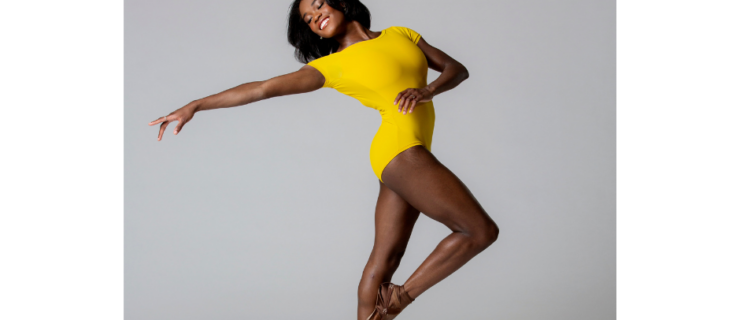The Eyes Have It: How Dancers Can Use Their Eyes Effectively Onstage
Have you ever been unable to take your eyes off a dancer, only to realize it’s because they’re using their eyes so beautifully? Powerful eye contact can be the detail that takes your performance to the next level. Not everyone knows how to use their eyes effectively, though. Too much eye contact can make you seem fake; too little, insecure.
Walking that tightrope is enough to make anyone want to run and hide in the dressing room. But don’t take those false lashes off just yet. We asked four industry experts to share the tools you need to use your eyes effectively onstage.

(Top to bottom) Matt Doyle and Ashley Day in Al Blackstone’s “Freddie Falls in Love” (Curtis Brown, courtesy Al Blackstone)
Why the Eyes Pose Such a Challenge
According to Manny Castro, owner of Dance Town studio in Miami, FL, performing with your eyes is difficult because it requires vulnerability—and courage. “It’s not a technical thing you can grasp externally,” Castro says. “It’s something that comes from within your heart. You have to be brave enough to share your feelings.” Prodigy Dance and Performing Arts Centre owner Camille Billelo agrees. “Dancers are so afraid of not getting positive feedback for their work that they protect themselves by looking at the floor and never putting themselves fully out there,” she says.

Prodigy Dance Center’s Teen and Elite performing company at The Dance Awards (courtesy Break the Floor Productions)
How to Overcome the Struggle
1. Nurture Good Communication Skills
We become better performers as we cultivate our communication skills. “I constantly talk to my dancers about how they feel and what they want the audience to know,” Castro says. “Performing is not about raising the corners of your mouth, it’s about using your eyes to express things you’re genuinely feeling. If you don’t know what you’re feeling, and you don’t know how to talk about it, you’ll really struggle to say anything with your eyes.”
Try talking about the feelings you want to communicate through your piece with a friend, teacher, or family member. Then, practice tapping into those emotions in rehearsal, tying specific feelings to particular phrases or moments in the choreography. Ask your teacher for feedback before taking it to the stage.
2. Think About Your Focus
For celebrated musical theater choreographer Al Blackstone, effectively performing with the eyes begins with focus. “Using focus is not just about physically putting your eyes somewhere,” Blackstone says. “It’s about learning to make yourself interested in what you’re looking at. If you are looking at the audience, you should have an emotional exchange with them. Most of the time this requires some imagination.”
Pay attention to where your choreographer sets your gaze. Notice if they say anything about what it is you are looking at, or if you have the freedom to interpret it yourself. Then, rehearse with that focus in mind. Use your imagination to create a world onstage that gives your gaze meaning.

Dancers in Blackstone’s “Freddie Falls in Love” (Curtis Brown, courtesy Blackstone)
The Dos and Don’ts of Eye Contact
DO Keep Your Focus Steady
“Changing focus from second to second is distracting,” Blackstone says. “It’s the second, third, and fourth seconds that make your focus meaningful. You can practice this in warm-up. Stare at yourself in the mirror. The more comfortable you get with that, the easier it will be to keep your focus in other directions.”
DON’T Stare People Down
“When people stare at the camera, or at an audience member the whole time, the dance doesn’t feel genuine, and it can get uncomfortable,” says L.A.-based commercial dancer Stevie Doré. “I get the biggest response when I just allow eye contact to flow naturally.”
DO Make Eye Contact with Your Partner
“Eye contact between partners is the most important thing for finding connection,” Castro says. “There was a duo at our studio last year called ‘Me and My Shadow’ that was constantly praised for the connection of the dancers. They would look at each other with sadness, and it would speak volumes to the audience.”
DON’T look at the floor
“Just don’t do it. It’s simply a bad habit,” Castro says. “I’ve corrected dancers who look at the floor for years.” If you’re frequently criticized for floor-gazing, Castro suggests recording yourself dancing, so you can see how often you’re doing it. Seeing the problem on video can be a big wake-up call.




